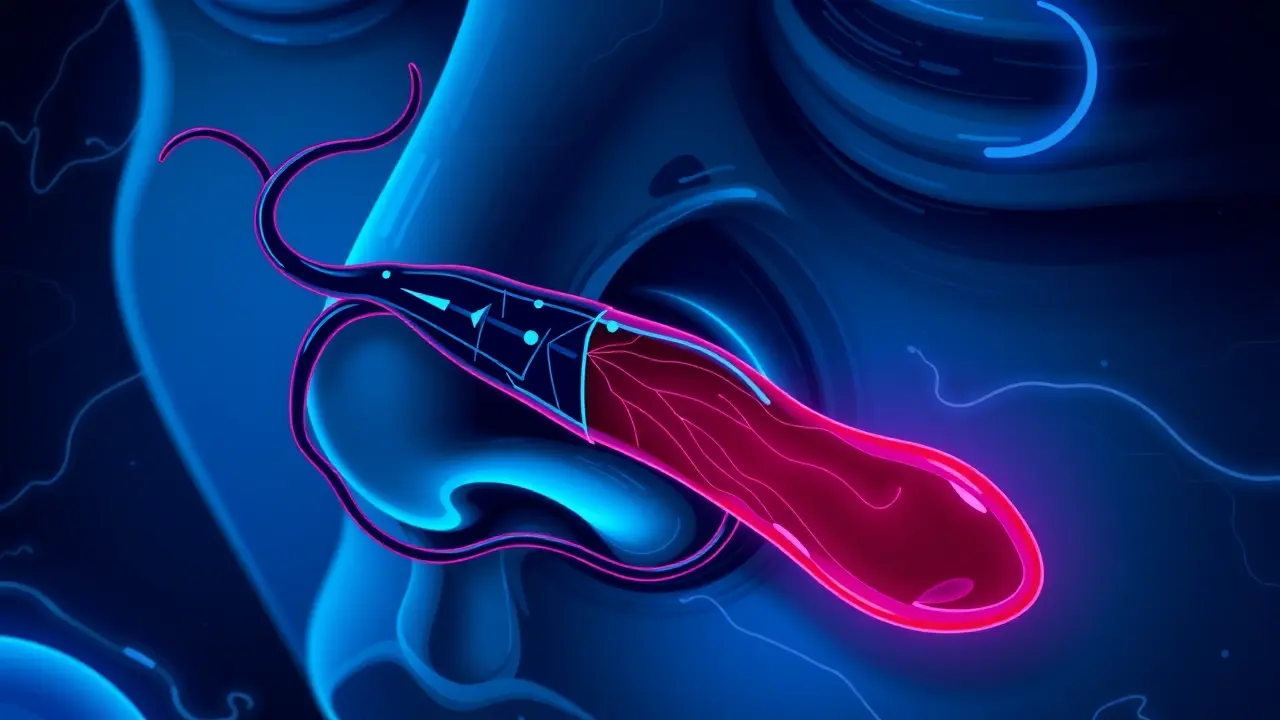
SciencemedicinePublic Health
Doctors remove live leech from man's nose, curing bleeding.
KE
Kevin White
16 hours ago7 min read4 comments
In a startling case that reads like a script from a medical thriller, a 38-year-old man in China's Hunan province endured a ten-day ordeal of persistent nasal hemorrhaging, a mystery that was only solved when physicians at the First Hospital of Hunan University of Chinese Medicine discovered the culprit: a live leech, firmly entrenched within his nostril. This incident, far from a mere medical curiosity, serves as a potent reminder of the complex and often unsettling intersections between human physiology and environmental biology, a frontier where modern medicine frequently collides with ancient parasitic relationships.The patient's presentation with chronic epistaxis, a condition typically attributed to factors like nasal dryness, hypertension, or trauma, initially followed a standard diagnostic pathway. However, the failure of conventional treatments to stem the bleeding prompted a more invasive examination, leading to the shocking visual of the annelid, a creature whose very survival depends on its ability to anchor itself and feed on a host's blood undetected.Leeches, belonging to the subclass Hirudinea, are not merely passive bloodsuckers; they are sophisticated biological machines equipped with an anesthetic in their saliva that prevents the host from feeling their bite, an anticoagulant (hirudin) that ensures a free-flowing blood meal, and a remarkable ability to expand to several times their original body weight. The successful extraction of this organism, a procedure requiring precision to avoid its fragmentation and the potential for secondary infection or allergic reaction, highlights a critical, albeit niche, area of clinical parasitology.This case is not an isolated one; medical literature is replete with reports of leech infestations in various human orifices, including the nasopharynx, larynx, and even the urethra, often linked to individuals bathing in or drinking from untreated freshwater sources in endemic regions across Southeast Asia, Africa, and South America. From a biotechnological perspective, the very molecules that make leeches such effective parasites—like hirudin—have been harnessed for therapeutic purposes, used in microsurgery to prevent blood coagulation and in drugs to treat cardiovascular diseases.This creates a fascinating dichotomy: the leech as both a clinical pest and a source of life-saving medicine. The future of managing such zoonotic and parasitic threats may lie in advanced diagnostics, perhaps leveraging AI-driven imaging to identify foreign biological matter more swiftly, or in public health initiatives that combine traditional warnings about water safety with modern sensor technology to detect parasite levels in communal water bodies. The resolution for this particular patient was swift and curative, a testament to clinical acumen, but his story opens a broader dialogue about humanity's ongoing, and often intimate, battle with the natural world, a battle where the lines between pathology and biology are perpetually, and sometimes disturbingly, blurred.
#featured
#leech
#nosebleed
#medical case
#China
#parasitic infection
#otolaryngology
Stay Informed. Act Smarter.
Get weekly highlights, major headlines, and expert insights — then put your knowledge to work in our live prediction markets.
Related News
© 2025 Outpoll Service LTD. All rights reserved.





